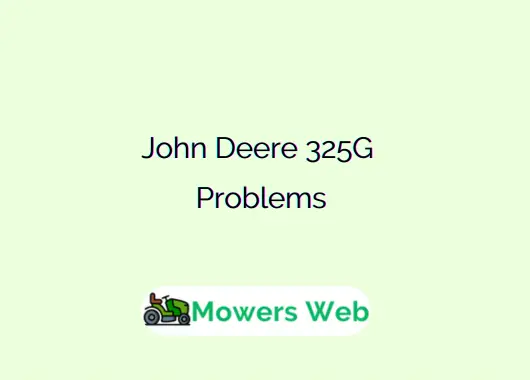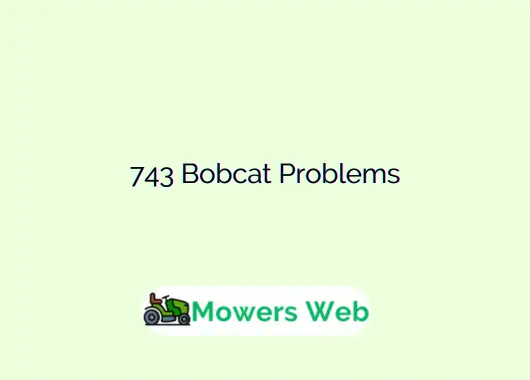This post guide explores the most common problems operators encounter with the John Deere 325G, their causes, and practical solutions to keep your machine running smoothly. Let’s jump in.
John Deere 325G Problems
1. Hydraulic System Issues
The hydraulic system is the backbone of the 325G’s functionality, powering attachments and lifting capabilities. However, operators frequently report issues such as leaks, sluggish performance, or pressure fluctuations.
- Symptoms: Slow or erratic lift/dump movements, overheated hydraulics, or unresponsive attachments.
- Causes: Common culprits include worn or damaged seals, clogged hydraulic filters, faulty hoses, or malfunctioning relief valves. Low hydraulic fluid levels can also reduce performance.
- Solutions: Regularly inspect hoses and fittings for wear or damage and replace them promptly. Ensure hydraulic fluid levels meet manufacturer specifications and bleed the system to remove air. Replace suction and return filters as part of routine maintenance, typically every 500 hours.
- If pressure issues persist, calibrate or replace the relief valve to restore optimal hydraulic performance. For leaks, pressurize the system and check for loose connections or damaged seals, using protective gear during inspection.
Related John Deere Tractor Dashboard Symbols(ALL + Meanings)
2. Engine Performance Problems
The 325G’s diesel engine is robust but can face issues like overheating, power loss, or stalling, especially under heavy loads or in harsh conditions.
- Symptoms: Sudden temperature spikes, oil smoke, power loss, or the engine stalling after warming up.
- Causes: Blocked cooling fins, dirty air filters, low coolant levels, or issues with the fuel system, such as clogged filters or faulty injectors, are common. Air ingress through cracked fuel pick-up tubes can also cause stalling.
- Solutions: Regularly clean the radiator, cooling fins, and air intakes to prevent overheating. Maintain coolant levels and replace the thermostat or cooling fan if they malfunction. For fuel-related issues, inspect and replace fuel filters, especially in dusty environments, and ensure the fuel tank vent is clear.
- Check the fuel pick-up tube assembly for cracks and replace it if necessary. If injectors are clogged, clean or replace them, and verify proper injector timing. Glow plug issues, common in cold climates, can be resolved by ensuring secure connections.
Related 15 Common John Deere 6115d Problems(With Solutions)
3. Control System and Joystick Failures
The 325G’s control system, including its joysticks and quick-attach mechanisms, can sometimes become unresponsive or erratic, frustrating operators.
- Symptoms: Unresponsive joysticks, slow control response, or a non-functional quick-attach coupler.
- Causes: Loose or corroded wiring, faulty joystick sensors, safety switch malfunctions, or actuator issues can disrupt controls. A blown fuse or software glitches may also be responsible.
- Solutions: Start by checking all wiring connections from the joystick to the actuators and hydraulic pump for looseness or corrosion. Use a multimeter to test for continuity in the wiring harness and replace any damaged cables.
- Inspect the fuse box, typically located on the right side of the operator’s station, and replace any blown fuses. Recalibrate the joystick by lowering the safety bar, holding the joystick fully, and cycling the ignition and loader button. If issues persist, update the machine’s firmware, replace the joystick control board, or the actuator.
Related John Deere LT160 Problems(7 Common + Solutions)
4. Track and Undercarriage Wear
The 325G’s rubber tracks and undercarriage are designed for low ground pressure and excellent traction, but they can wear prematurely or cause operational issues.
- Symptoms: Sagging tracks, machine jerking or drifting, or excessive vibration.
- Causes: Worn rollers, idlers, or sagging track tension are common. Debris or mud trapped in the undercarriage, especially in freezing conditions, can trigger safety shutdowns or startup errors.
- Solutions: Clean the track frame daily, especially after muddy or debris-heavy jobs, to prevent buildup. Adjust track tension weekly per the manufacturer specifications and replace worn rollers or idlers. If the machine drifts or vibrates, check alignment and remove any debris lodged in the sprocket cogs. In cold or muddy conditions, ensure cogs are clear to avoid startup errors.
Related John Deere Cool Gard Alternative(Top 5 Best Picks 2025)
5. Electrical and Camera Issues
Electrical glitches and issues with the 325G’s backup camera are frequently reported, particularly for machines equipped with advanced features.
- Symptoms: Unresponsive controls, battery drain, or a fading backup camera display.
- Causes: Corroded wiring, faulty relays, or sensor errors can cause electrical issues. Backup camera failures are often due to faulty cameras or wiring issues, with the display fading as the machine warms up.
- Solutions: Inspect all electrical connectors and grounds, cleaning terminals and applying dielectric grease to prevent corrosion. Test relays and sensors with a multimeter and replace any faulty components. For camera issues, check the wiring harness for damage or loose connections. Replacing the camera, which costs around $700, may be necessary, though persistent issues could indicate monitor or wiring problems.
Related John Deere Power Reverser Transmission Problems(Fixed)
Maintenance Tips for Longevity
To minimize these problems and extend the 325G’s lifespan, which can reach 5,000–10,000 hours with proper care, follow these maintenance practices:
Hydraulic Care: Regularly check fluid levels, replace filters every 500 hours, and bleed the system to remove air. Test relief valve pressure periodically.
Fuel System Hygiene: Use clean fuel, replace filters in dusty conditions, and inspect the fuel pick-up tube for damage. Flush the fuel tank if contaminants are present.
Electrical Maintenance: Keep connectors dry, test relays and sensors regularly, and update firmware to address software glitches.
Track and Undercarriage: Clean tracks daily, adjust tension weekly, and lubricate pivot points to reduce wear.
General Upkeep: Adhere to the maintenance schedule, including engine oil changes, coolant checks, and air filter replacements. Train operators to avoid overloading and use attachments correctly.
FAQs
What is the difference between John Deere 317G and 325G?
The John Deere 317G has a 65 HP engine, 2,125 lb rated operating capacity, and a smaller frame, while the 325G offers 74 HP, 2,590 lb capacity, and enhanced hydraulic flow for heavier tasks.
How much HP is a John Deere 325G?
The John Deere 325G has a 74 horsepower Yanmar 4TNV98CT turbocharged diesel engine.
What is a weakness of John Deere?
Common weaknesses include hydraulic leaks, track wear, and occasional electrical issues, particularly in harsh conditions, requiring diligent maintenance.
Can a John Deere 325G load a dump truck?
Yes, the 325G can load a dump truck with its 2,590 lb capacity and 8.5 ft lift height, suitable for smaller to medium-sized trucks.
How much does a John Deere 325G cost?
Pricing varies, but a new John Deere 325G typically costs between $60,000 and $80,000, depending on configuration and attachments.
Final words
The John Deere 325G is a capable workhorse, ideal for demanding tasks in tight spaces. While it faces issues like hydraulic leaks, engine problems, and control system glitches, these can be resolved with proper troubleshooting and maintenance.
By staying proactive, cleaning tracks, checking fluids, and addressing electrical faults, you can ensure the 325G performs reliably for years. With the right care, the 325G remains a valuable asset for any operator.




